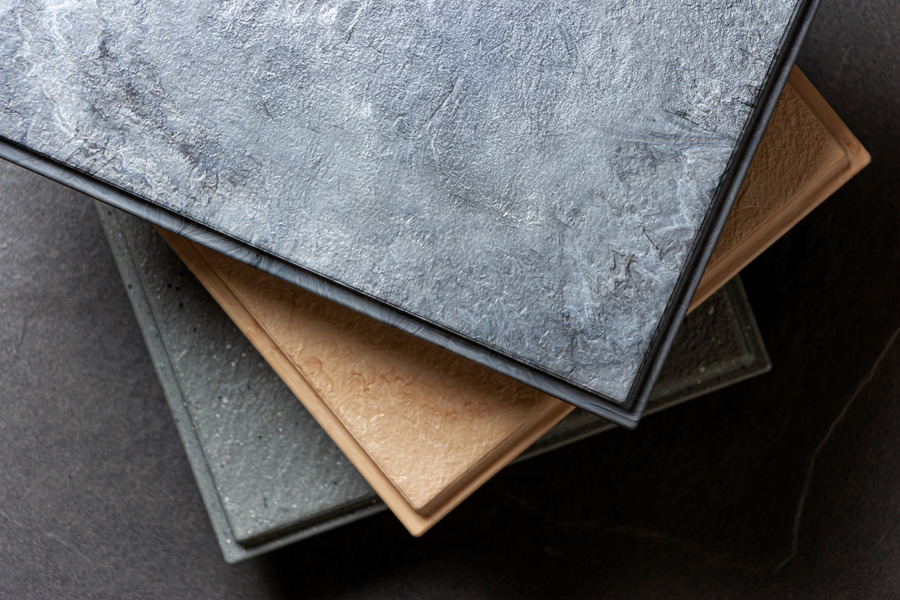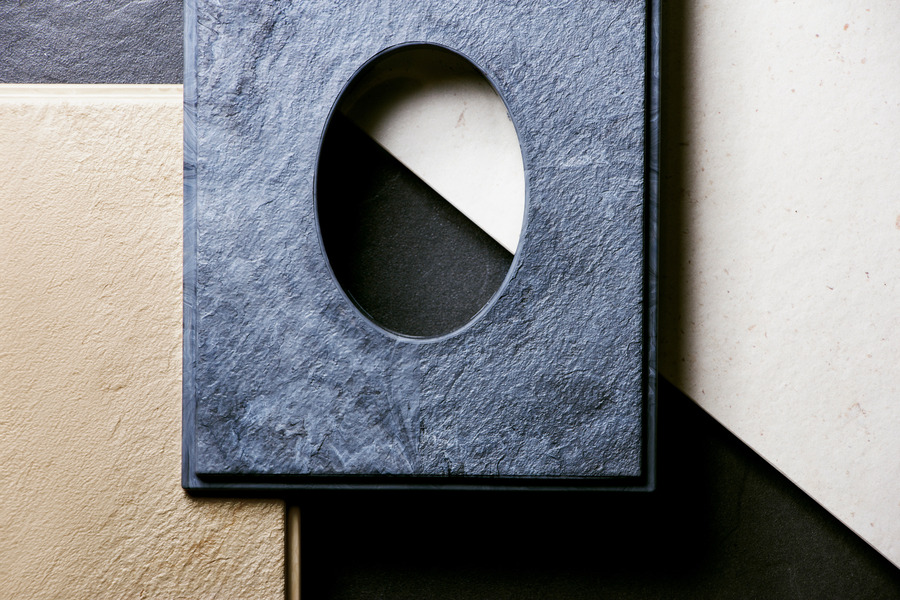GRAFE identifies trends and supports customers from implementation to the finished product
When it comes to surface trends, nature offers designers worldwide the greatest inspiration, as it is an almost inexhaustible source of shapes and colors. And because it is alive, it changes, which in turn leads to new structures, shapes, tones and nuances being created over and over again. Just think of ocean waves, plant growth or changes in geological formations. In plastics processing, the “art” lies in “processing” “substances” (or more precisely materials) in such a way that design ideas become visually and haptically appealing yet functional products.
New effects in the plastics industry
This is where the GRAFE GRUPPE, Blankenhain, comes in. The company sees itself as a technology partner that identifies trends and then supports customers through to implementation in plastic products. “Design can be implemented in plastic using color, particles and graining,” says Lars Tonnecker, Sales Manager Field Service. “Based on current trends, our designers can always create new effects with added particles and graining. But we also offer a high level of consulting expertise in the implementation of these ideas in plastic, making us a partner in product development.”
Color combined with particles, fibers or flakes
For the development of new surfaces, he describes ways in which design ideas can be implemented. “Color can be combined with additives such as particles, fibers or flakes. In combination with grains borrowed from nature or modern graphic abstractions, unique effects are created”. Tonnecker explains: “What distinguishes us as a development partner and can be characterized as a unique selling point is the combination of trend consulting, implementation in the plastic product and technological expertise in the development of the tailor-made masterbatch or compound. We are partners throughout the entire product development cycle.”
 | |
| Plastic surfaces that perfectly imitate natural materials |
“When flakes and fibers are combined with color and plastic, the challenge is not to change the macroscopic structure during processing in order to achieve the desired effect,” explains Michael Dirauf, Head of Analytics at GRAFE. “When selecting the effect pigments, our in-house expertise in analytics helps us to identify the suitable pigments based on microscopy images of the extruded material.” According to him, these combinations are currently often requested by customers, as interesting effects can be achieved using flakes and fibers in addition to the desired color. “The added particles create a varying appearance. Minimal visual differences are desirable and underline the individual character.”
Quality assurance is a particular focus
Such materials are particularly popular in the consumer and automotive sectors. “Iridescent colors, strong juicy tones or gemstone looks create a reference to nature in consumer products that are used in cosmetics, living, bathrooms and sanitary facilities or kitchens, while at the same time underlining their value and noble appearance,” reports Tonnecker. “In the automotive sector, it is primarily materials with different transparencies that are backlit and create spectacular effects. In addition, natural tones convey calm, durability and solidity.”
On the processing side, flakes and fibers in combination with paint and plastic are no trivial matter, as Lars Schulze, Head of Color Development and Material Sciences at GRAFE, points out. “Quality assurance is a particular focus here. Possible quality fluctuations in the plastics used and in the added flakes or fibers require continuous monitoring in order to meet the quality requirements,” explains the expert.
Grain patterns borrowed from nature or graphically abstracted
Plastic surfaces that perfectly imitate natural materials can be created by adding color and particles in combination with structures. The surface grains appear deceptively real, but have cost advantages over their natural and therefore expensive twins. “In addition, the flexibility of plastics offers extended possibilities for shaping the products,” says Tonnecker. He mentions wood, stone and woven fiber structures, matt and contrasting, glossy or transparent for corresponding substitutions, which can also be used to expand the areas of application.
 | |
| Custom-made plastic surfaces that perfectly imitate natural materials |
Another focus of current design trends is graphic surfaces or graining, which are created using geometric and sometimes microscopically small patterns strung together. “They appear handcrafted and at the same time convey technical precision,” says Tonnecker, describing their special appeal. “Dark color nuances and tones that convey the absence of light and thus heaviness often contrast with light and iridescent colors,” he describes, citing as examples foils that have an effect on the surface, for example on furniture or technical housings.
- autor:
- GRAFE Polymer Solutions GmbH




















